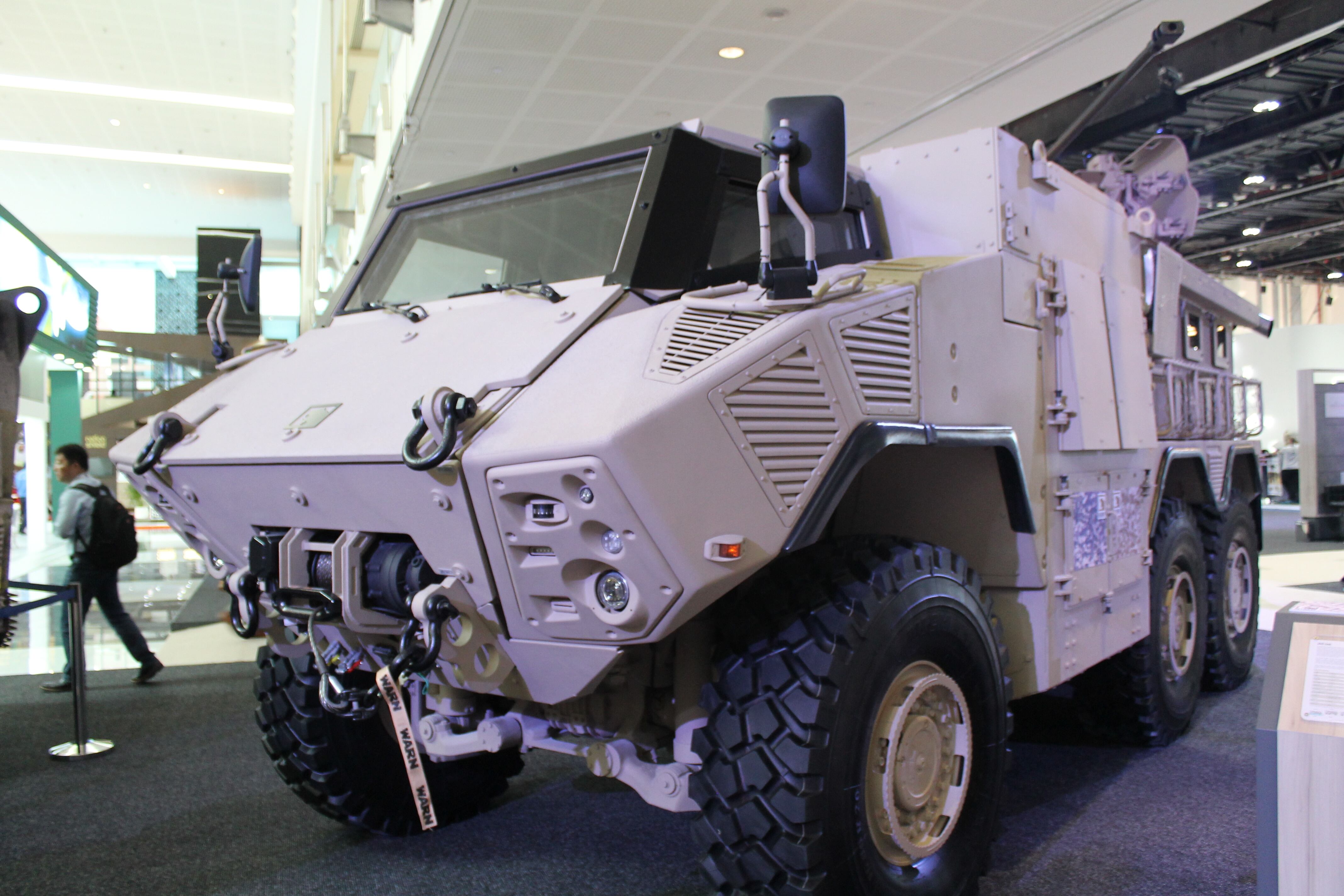ABU DHABI – NIMR Automotive revealed how its new 4x4 all-terrain vehicle performs on the burning desert sands of Abu Dhabi, with the sun beating down as it swept over curves and the dust danced in its tracks.
Proven performance in such extreme conditions, whether they be blazing hot or frigidly cold, is among the differentiators of the company’s Rapid Intervention Vehicle, company executives told Defense News during a visit to the UAE facility, which included a desert test drive in the vehicle.
Indeed, as the company designed and manufactured its vehicle in temperatures that reached near 150 degrees Fahrenheit, NIMR looked beyond the borders of countries within the Gulf Cooperation Council to those with colder climates to widen its market. The vehicle is fully customizable for countries in Eastern Europe, in particular, that are faced with insurgency and in need of armored vehicles for border security.
NIMR and partner MIRA, an engineering company based in the UK worked closely with the reconnaissance and special operations teams of the UAE Armed Forces to develop the vehicle specifications “focused on the military capability that’s required,” said Maj. Gen. Carey Wilks, NIMR’s chief operating officer.
“We needed something that would go inside a chinook and to be able to deploy from a chinook without preparation, to deploy straight into action,” Wilks said.
RELATED

The RIV is designed to travel by land or helicopter, either within a CH-47 or strapped below, carrying a 12.7 millimeter caliber heavy machine gun. The vehicle is equipped with an add-on ballistic armor kit, a self-recovery winch, C4I command and control and tactical communications.
The vehicle is manufactured and tested at its facility in Ajban, Abu Dhabi. NIMR’s new test track at the location allows for test driving of the vehicle on a wide range of terrain, including a 60 degree slope, shallow water, and rocky ground.
“The challenge was not the individual technology,” said Mark Carter, MIRA’s senior manager of electrical and control engineering. “The challenge was balancing the power, the top speed, the power-to-weight ratio, the train accessibility, the air transportability. But also, [ensuring] it can operate comfortably in environments that we see today,” he explained.
“It’s hugely challenging at 150 degrees. People shouldn’t underestimate the amount of work we have to put into controlling the temperature cooling system,” Carter added.
NIMR also includes a winterization kit in the RIV with engine and cabin heating to ensure the necessary fuel systems are heated for temperatures that reach near -25.6 degrees Fahrenheit.
Speed and mobility remain “key design characteristics of a special operations vehicle like the RIV,” said Miles Chambers, senior international business development executive. But what company executives recognized with engagements in Eastern Europe is that conditions are as important.
“Designing vehicles for the hot climate is suitable for the local and regional market, but the same engineering effort is going into the control of these vehicles for a wider market for cold climates,” Chamber noted, pointing to the need for winterization and winter testing and winter kits to ensure the automotive components of the vehicle, for example, can perform in cold climates.
The vehicle is equipped with large tires and a central tire inflation system to manage the air pressure, which can be adjusted to allow for low ground pressure, a vital feature to allow for mobility in terrain both in hot and cold environments.
“In the design of our vehicles, of course, being based here in the UAE, a key focus of these vehicles has been performance in the desert environments, where you have soft sands,” Chambers told Defense News. “Interestingly, that has very similar positive effects in colder climates, like snow and mud, where users have the same requirement [for] low ground pressure. So those mobility characteristics have the same benefit of giving mobility in different terrains, of course, for those colder climates.”
As Eastern Europe struggles with the growing threat of insurgency amid growing investment by Russia in its military, the region faces international pressure for increased investment in defense capabilities.
RELATED

“We’ve seen [this] in the Czech Republic as they start to phase out the Land Rover Defenders. They now have a requirement to replace these with more militarized-capable vehicles,” Chambers said. Across the region, “there’s a broad spectrum of equipment they’re going to now need to look into replacing, [shifting] away from commercial platforms to true militarized platforms where the vehicle life now extends from the 3-year of the commercial vehicle to up to 15 years of the military platform,” Chambers said.
The demand stretches from Eastern Europe right through to Southeast Asia, he added, pointing to the Philippines and Thailand, where increased demand for armored vehicles is “complemented by highly trained special operations, special forces that can be deployed for a mission – a covert mission – [in] counterinsurgency, then rapidly extract themselves.”
Puja Murgai is Special Projects Editor for Military Times.








